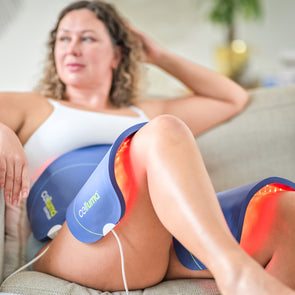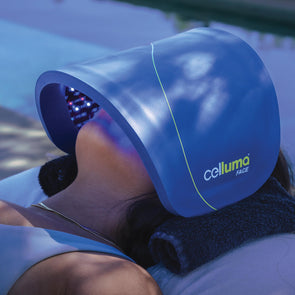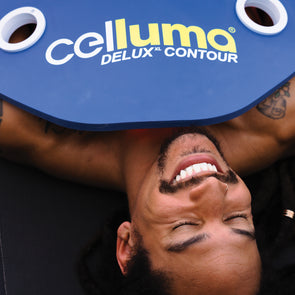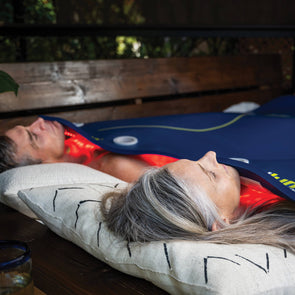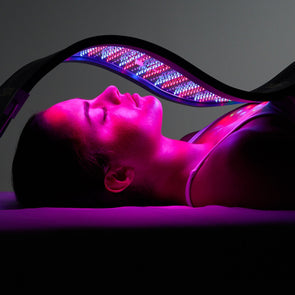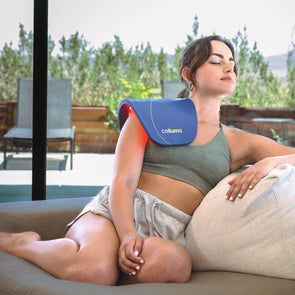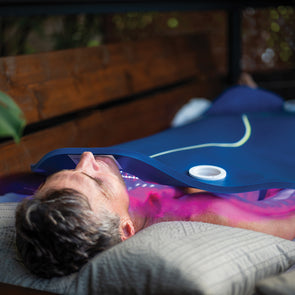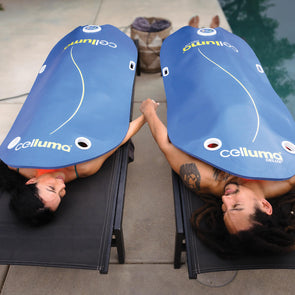LED Light Therapy After Microneedling: A Perfect Pairing

The pursuit of youthful skin, as well as a healthy glow, is the desire of the majority of women all over the world. Very few women are blessed with porcelain, blemish-free skin. It’s therefore no surprise that skin rejuvenation and the reduction of the signs of aging are the most frequent cosmetic requests that present to skin care professionals. There are endless cosmetic treatments available, as well as anti-aging products with incredible promises. So, how do we choose the best skin care treatment for our clients? And how do our clients choose the best products? What interventions can professionals adopt to improve the skin integrity, smooth out fine lines and wrinkles, and enhance skin for a healthy glow? Which treatments are best and will provide visible results, improve the skin, and deliver long lasting results at an affordable price?
Microneedling
There is an array of invasive and non-invasive skin procedures available in clinics and spas. Establishing which modality and pathway to choose for your clients can be a daunting challenge. We can be easily drawn in by the latest and best device that promises amazing results but carries a heavy financial burden to small businesses and spas. The more invasive procedures using the latest equipment, while very effective in collagen rejuvenation and remodeling, carry risks and complications as well as downtime and, for some, prolonged recovery periods. Minimally invasive procedures, while more tolerated, may require frequent treatments to achieve the same results. However, there is an increasing demand from the consumer for skin treatments with little or no downtime, carry little risk of complications, and are cost effective. One of the many non-ablative treatments that remain a popular choice among professionals is microneedling or collagen induction therapy.
HISTORY
Microneedling is a safe and effective procedure involving repetitive puncturing of the skin with sterilized needles to induce trauma to the epidermis. The concept originally developed by Orentreich in 1994, used skin needling to release fibrous strands in depressed cutaneous scars and fine lines. Dr. Andre Camirand reported that needle dermabrasion using a tattoo gun without ink could improve scars and improve the skin texture and tone of surrounding skin. However, Desmond Fernandes suggested that the depth needed to be deeper to stimulate collagen and elastin fibers and went on to develop the first cylindrical roller. Subsequent studies demonstrated a substantial improvement from 400% to 1,000% in elastin and collagen fibers six months after dermaroller therapy.
EFFECTS
According to Dr. Lance Setterfield, MD, LED light therapy should always be used after microneedling. "A question has arisen as to whether one should treat clients with LED immediately after medical needling. Opponents to this do so on the basis that inflammation has been taught traditionally to be an integral necessity in the process of rejuvenation, but is it? The absence of inflammation, and therefore scarring in embryo wound healing, allows us to conclude that not only is it NOT essential, but actually precludes optimum results. It is, in fact, on the basis of inflammation that scar tissue results, and this is obviously not desirable. Inflammation attracts myofibroblasts, as opposed to normal fibroblasts. The former makes abnormal scar tissue, as opposed to normal basket-weave collagen from fibroblasts. (In the Expanded Medical Edition of my book, I explain this concept in detail on page 78 to page 90.)
Therefore, applying LED immediately after a needling treatment (or any treatment involving injury to the skin), as well as using products in the ensuing days that switch the inflammatory process off ASAP, should be the goal."
The effectiveness of microneedling is the stimulation of controlled inflammatory and healing reaction and the remodeling of collagen through the release of growth factors, vascular endothelial growth factor (VEGF), fibroblast and epidermal growth factor (FGF and EGF), platelet derived growth factor (PDGF), and transforming growth factor (TGF). Studies have shown that VEGF is upregulated after needling and plays an important role in angiogenesis, as well as keratinocyte function.
Microneedling helps to regulate the secretion of melanocyte stimulating hormone (MSH) with a reduction two weeks after the procedure. As a non-ablative technique its results are similar to other invasive modalities but without the adverse side effects, such as hyperpigmentation, and is versatile, treating a number of skin concerns with very short downtime. The adoption of light emitting diode (LED) continues to grow in popularity. Research continues to demonstrate that this form of non-thermal, light therapy has major benefits in treating skin conditions. The low cost, ease of use, and excellent safety profile coupled with the measurable visible results achieved ensures its place as one of the sought after therapies among professionals and consumers alike. LED light therapy, and in particular, the red wavelengths penetrate deeper into the skin and alter the intrinsic cellular activity using the principles of photobiomodulation.
Chromophores in the skin absorb photons that cause alterations in the skins biophysiology that stimulates and generates a change in cell proliferation, inflammation and collagen production. These affects include an increase in ATP, modulation of reactive oxidative species, increased collagen, increase microcirculation, and blood flow. The use of red LED light therapy has been shown to activate FGF, increase collagen type I and reduce matrix metalloproteinase (MMP -1). The increase in fibroblasts supports the increase in collagenesis.
Studies have demonstrated that improvement in fine lines and wrinkles continues to improve up to 12 weeks post treatment. Red light therapy has proven to be beneficial for wound healing, photo damage, and premalignant lesions. When considering treatments which offer measurable results that are cost effective with minimum downtime and side effects, combining microneedling and light therapy appears to offer the best of both treatments. The release of multiple growth factors coupled with the increase in ATP and the fibroblast proliferation that the light therapy ensures, demonstrates that the combination treatment protocol of microneedling and light therapy are a perfect match to achieve healthy, glowing, rejuvenated skin.
To see a practitioner testimonial about the benefits of light therapy used in combination with microneedling, click here to visit our YouTube channel.
Author Pam Cushing is a registered nurse with more than 35 years of experience in emergency medicine. She has worked in the field of aesthetics for more than 15 years, full-time for the last five years. Cushing holds a degree at the master’s level, with commendation, as well as a post-graduate diploma in aesthetic medicine, with merit. She is an independent nurse prescriber in the United Kingdom. Cushing is a consultant educator for a couple of companies educating in injectables, skin resurfacing and chemical peel, microneedling, and LED Light Therapy. She thrives on being able to educate, motivate, and encourage others to grow and develop professionally. She is passionate about skin health and the benefits of aesthetics in improving the confidence and quality of lives. Cushing believes our key role is to educate the consumer on appropriate treatment modalities with the focus on maintaining skin health.
This article first appeared in the April 2020 issue of Dermascope Magazine as part of their LED Playbook series. To read the original article in Dermascope, click here.



